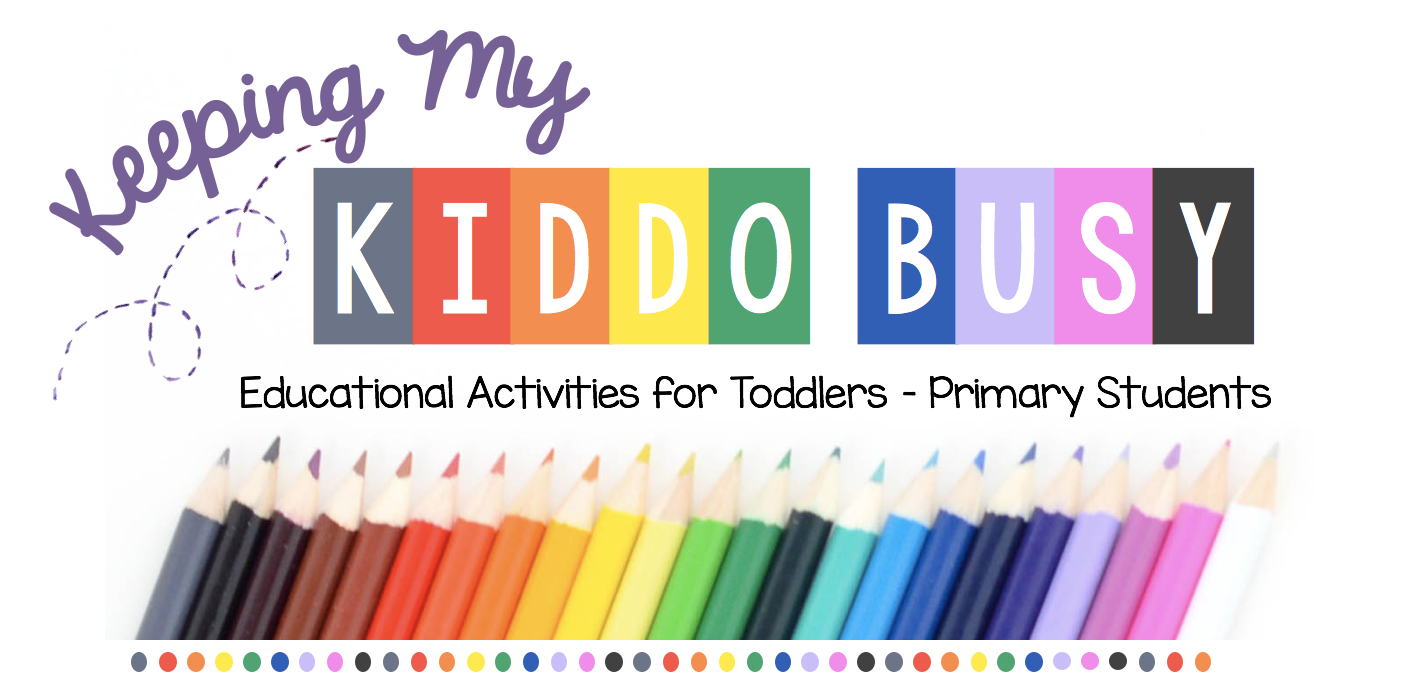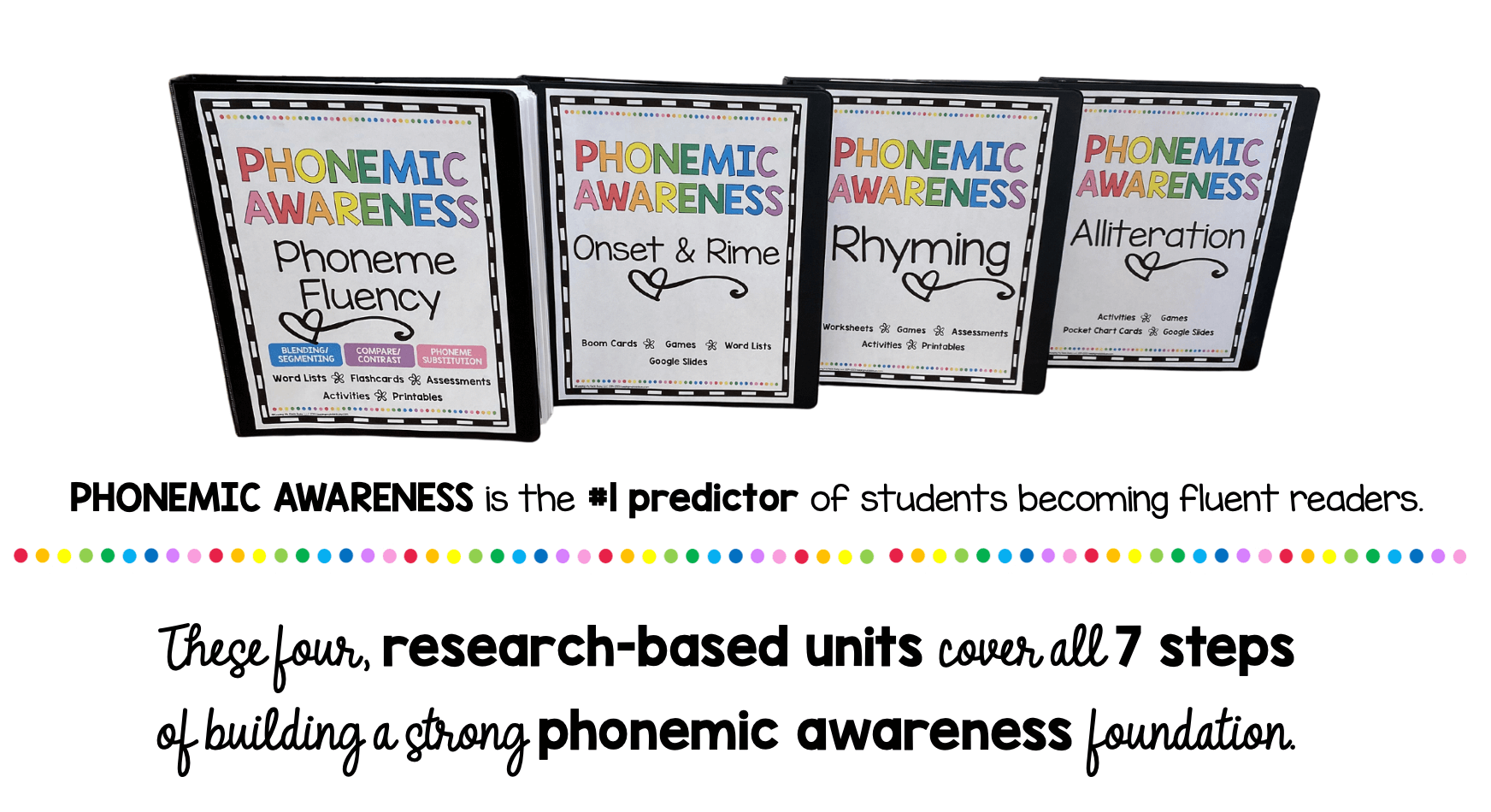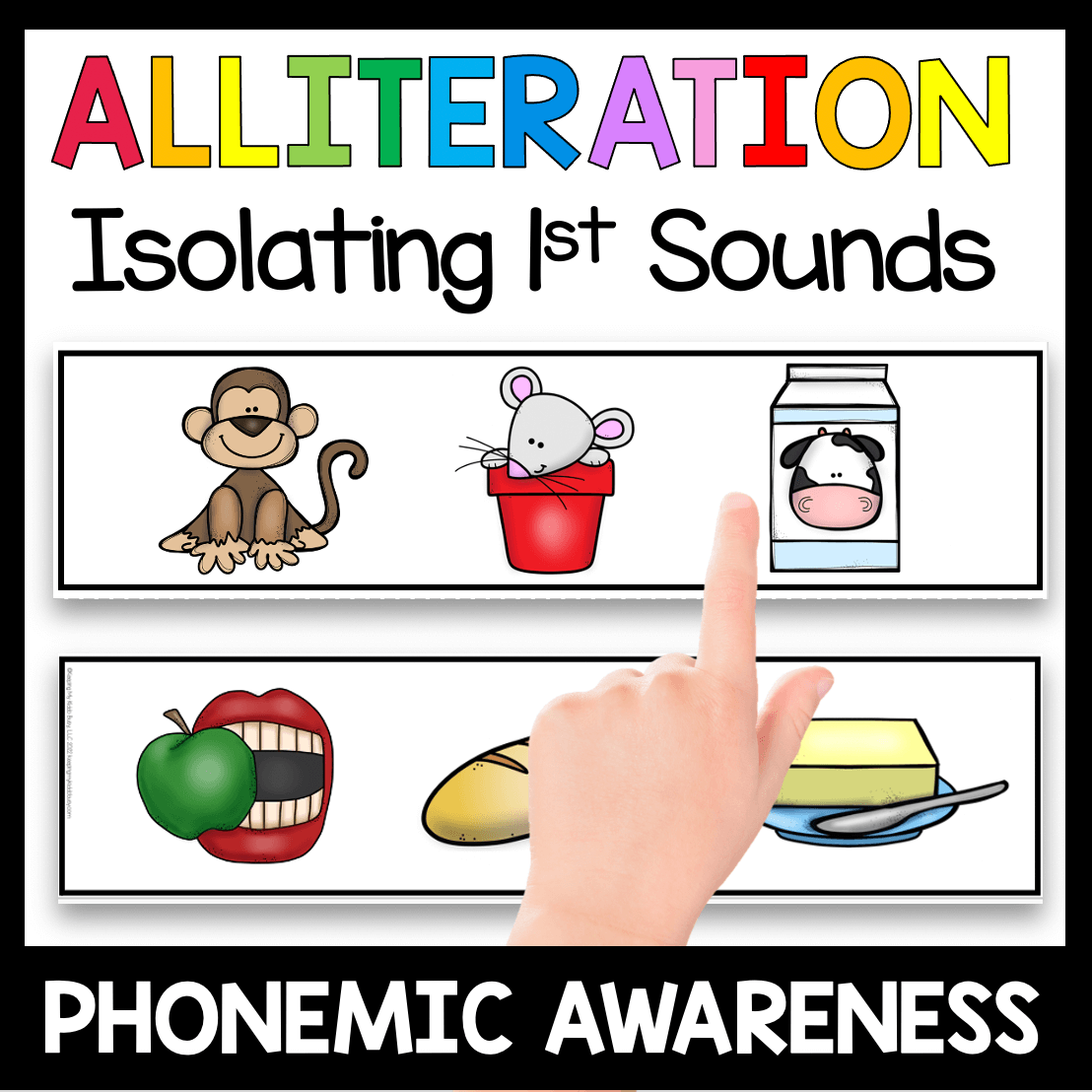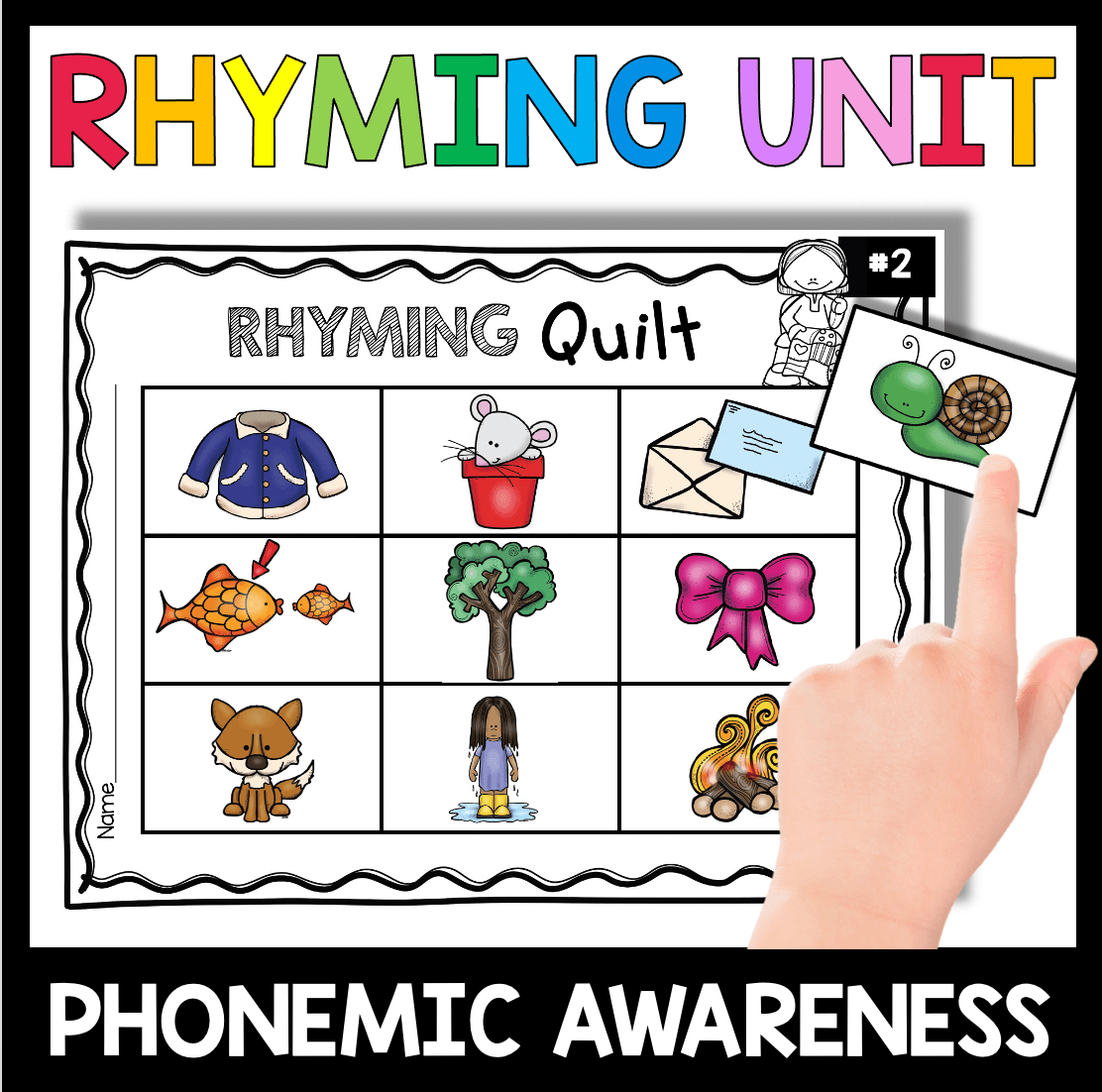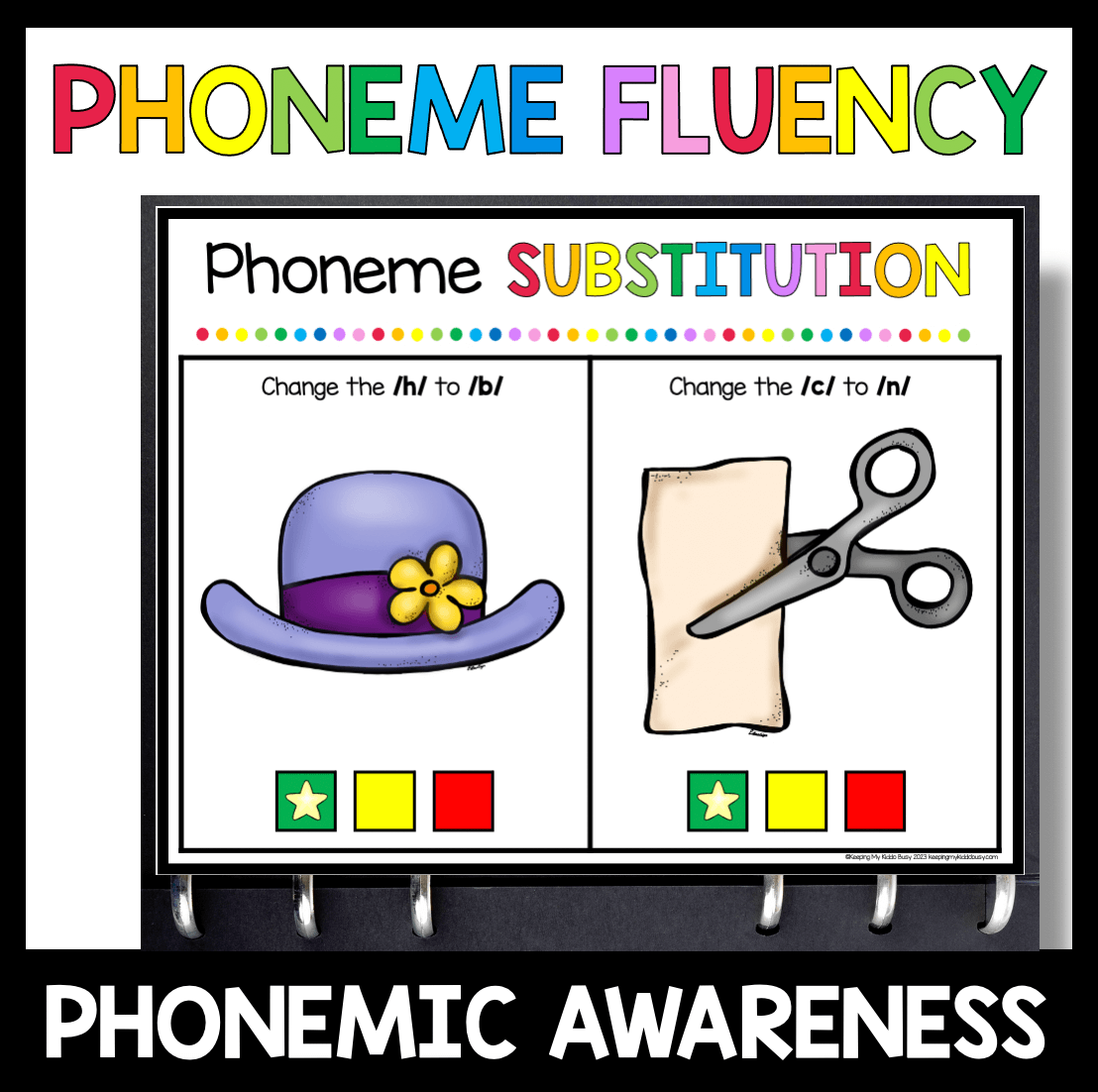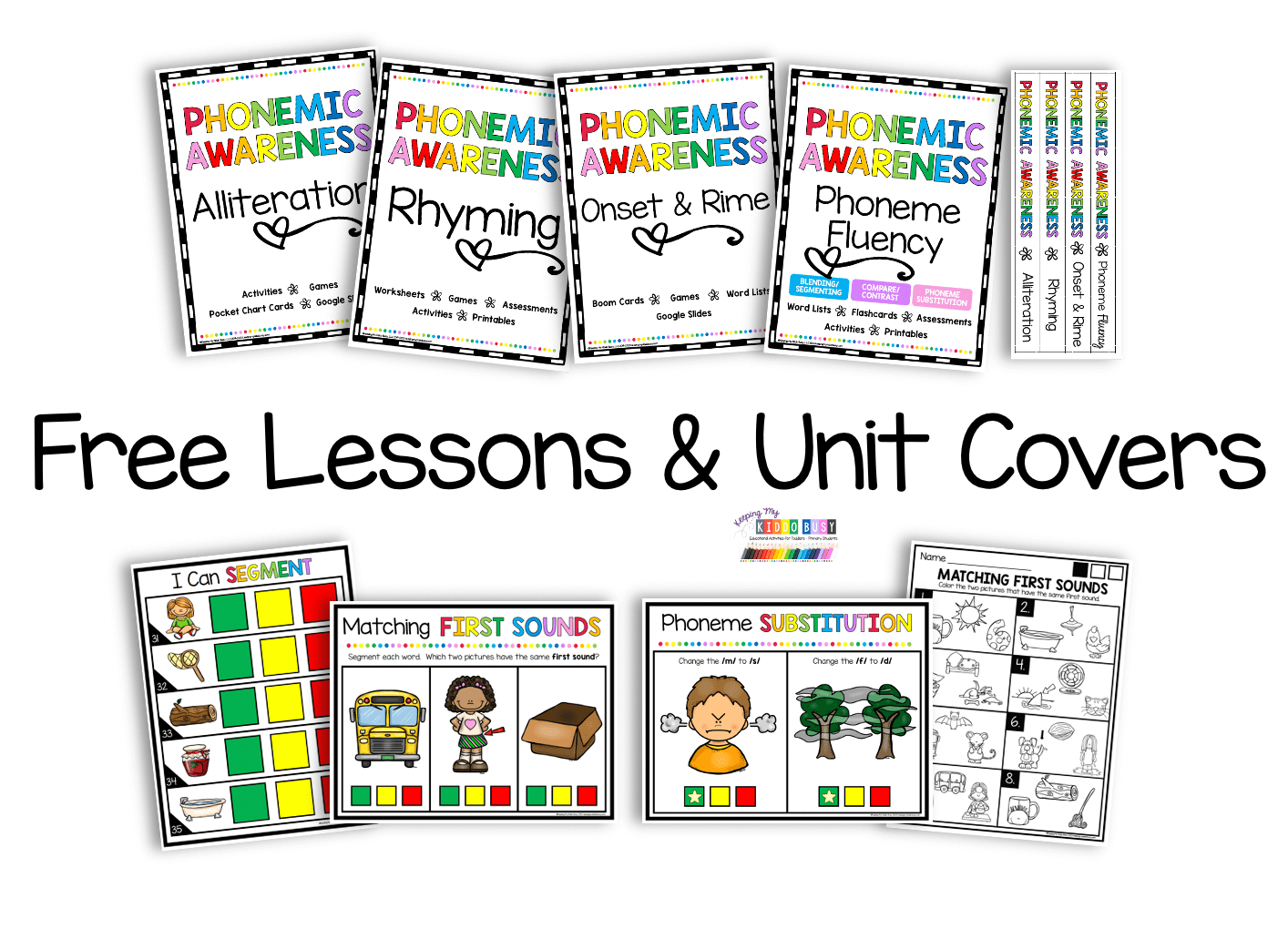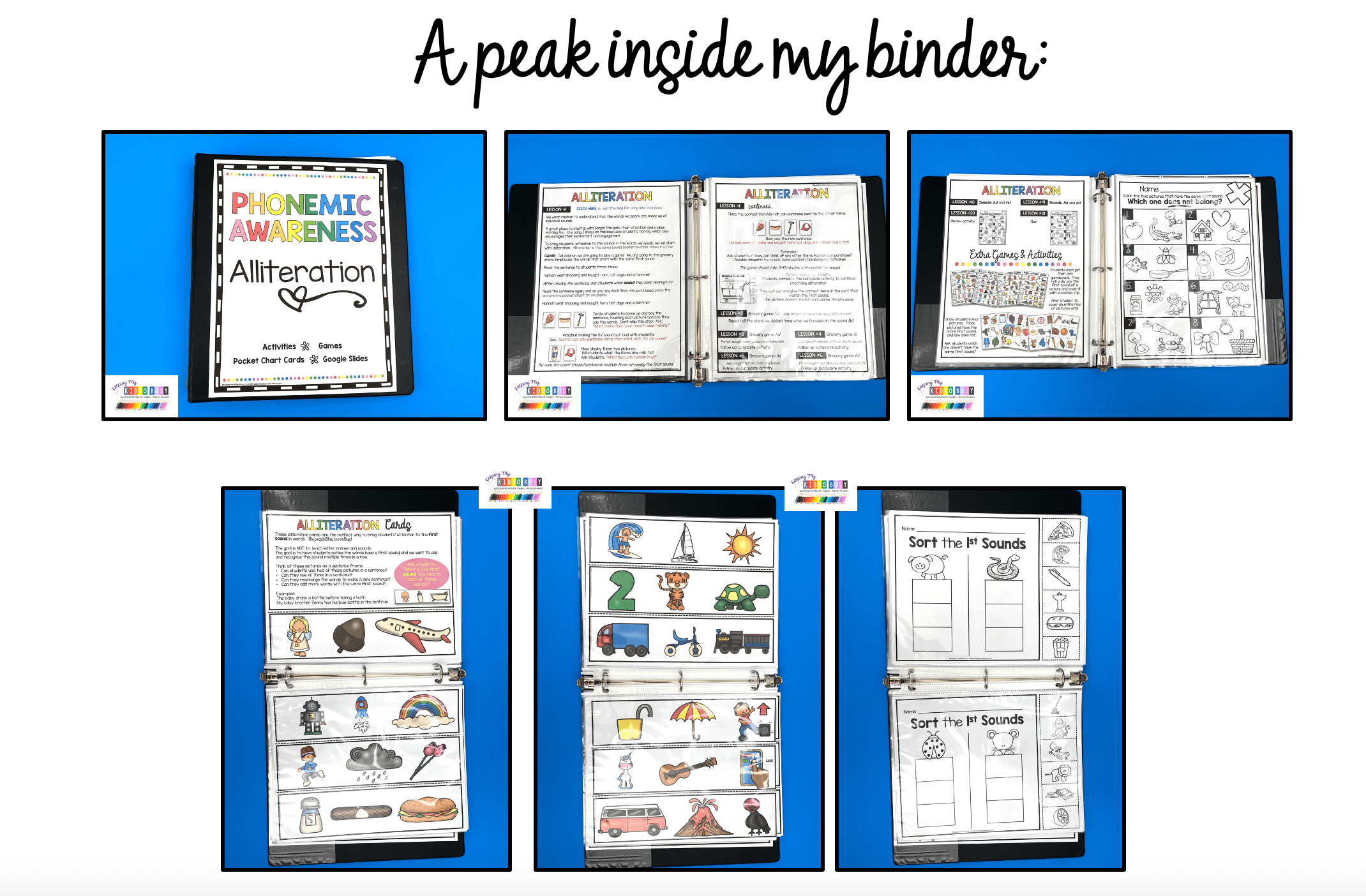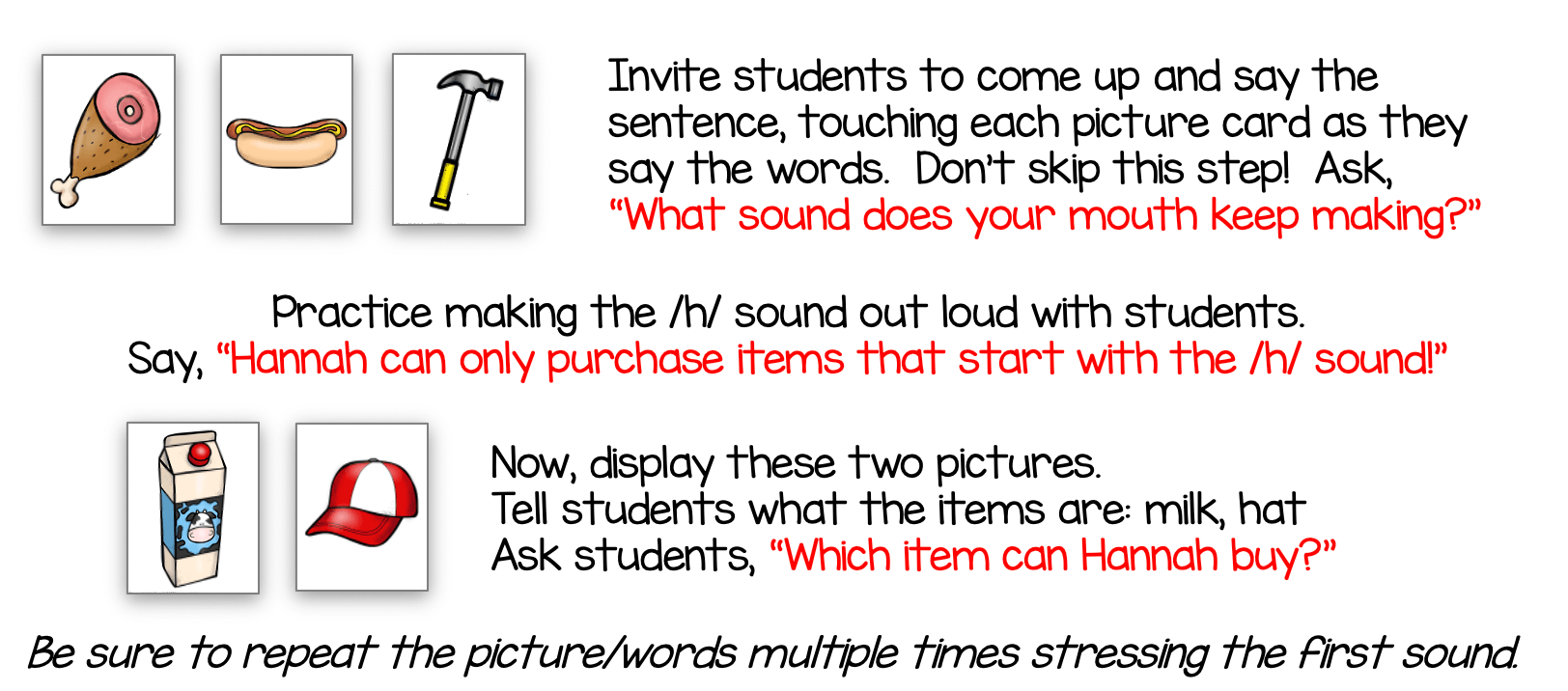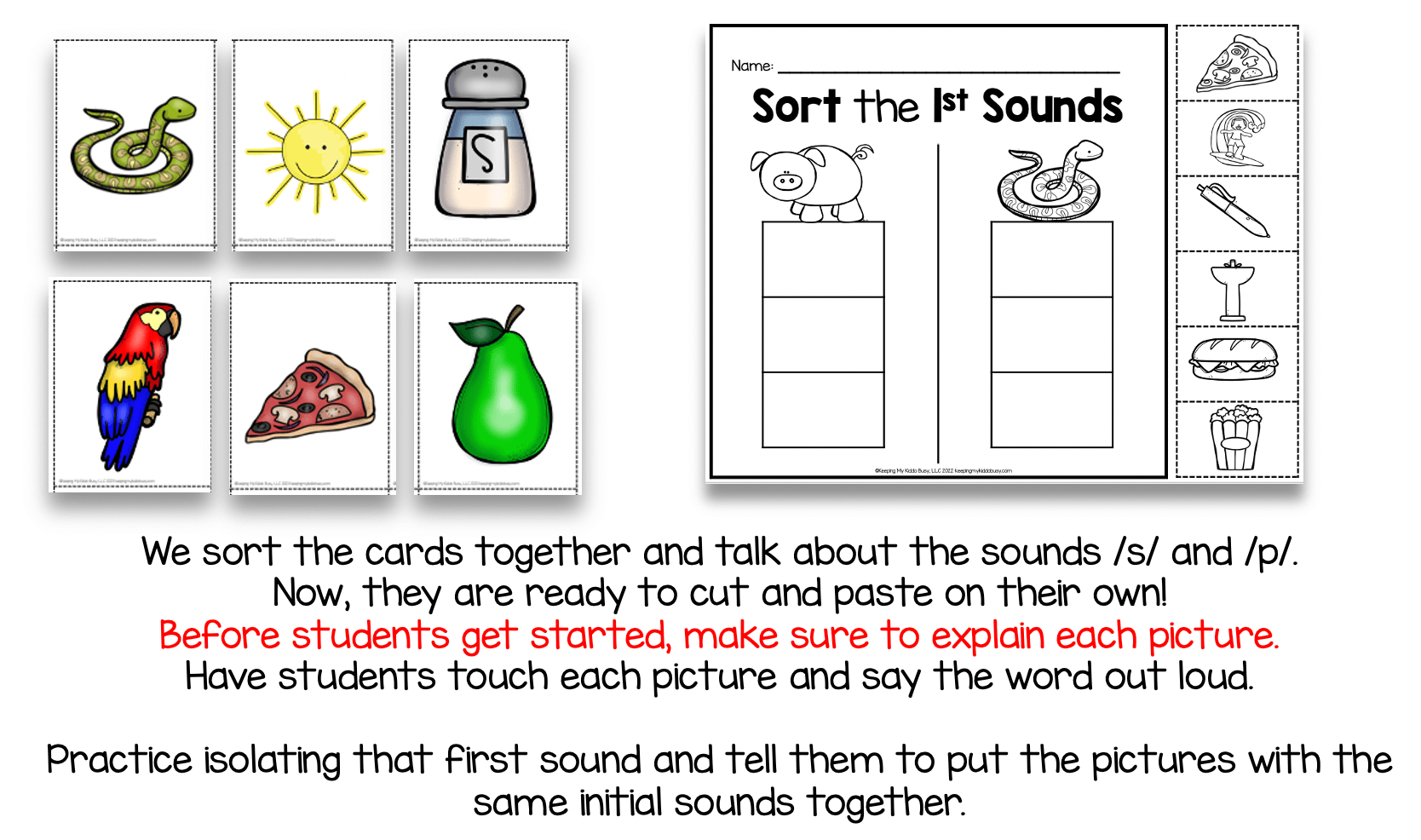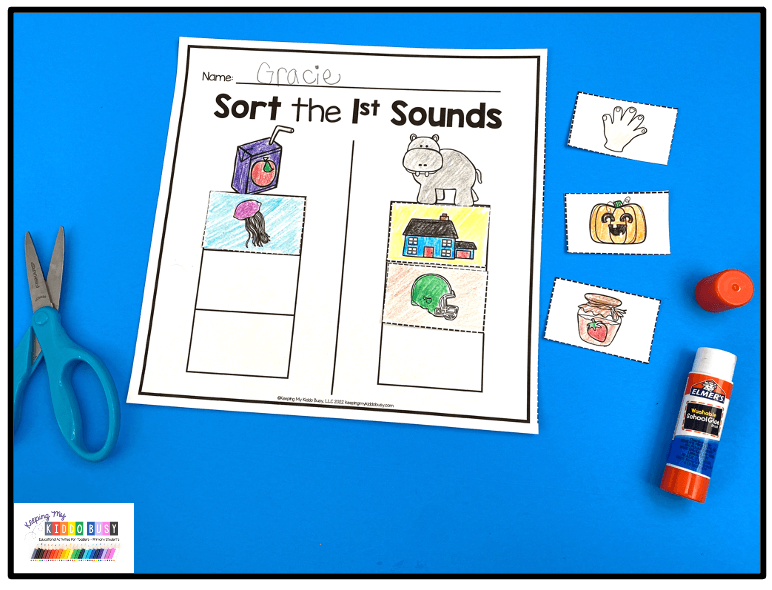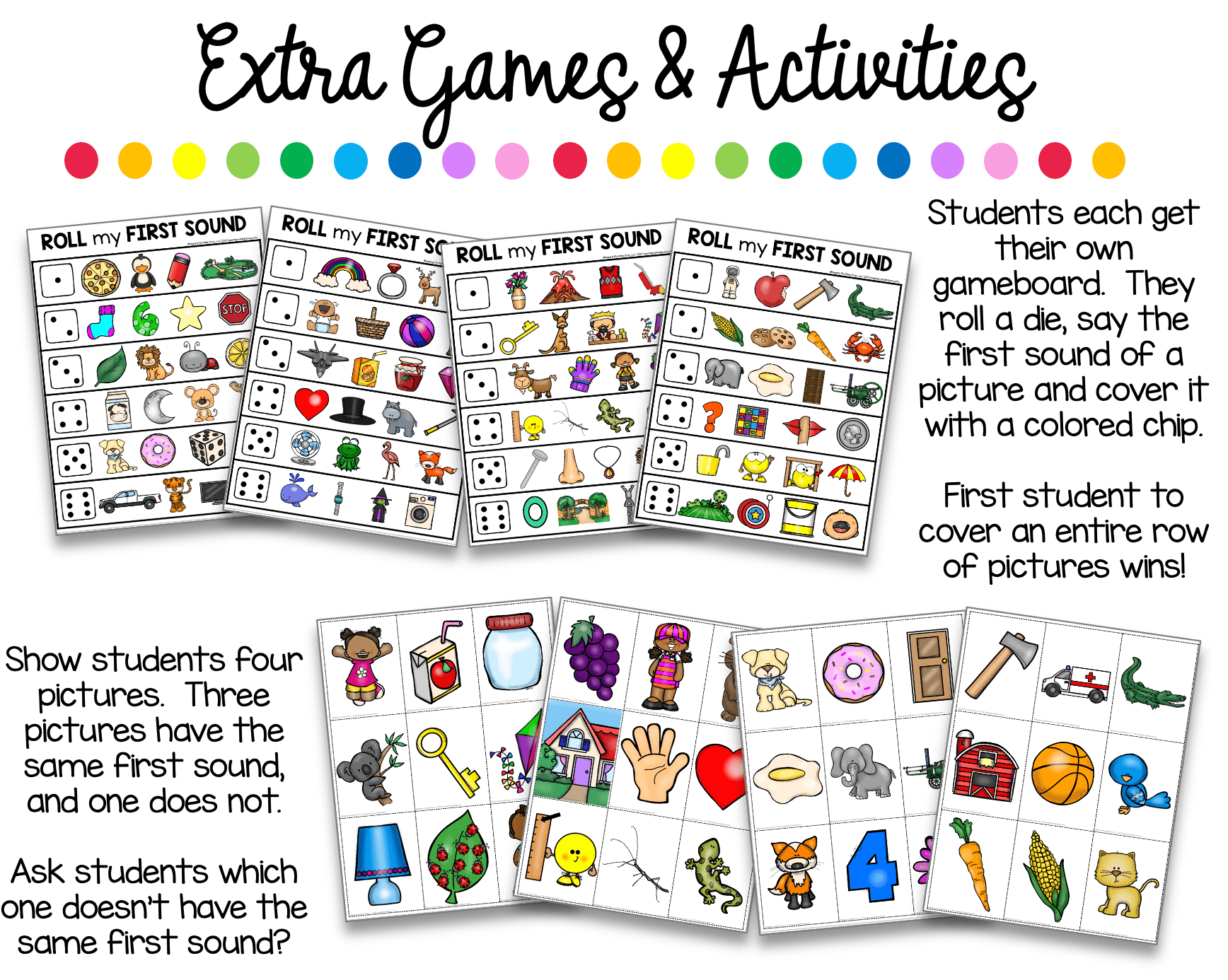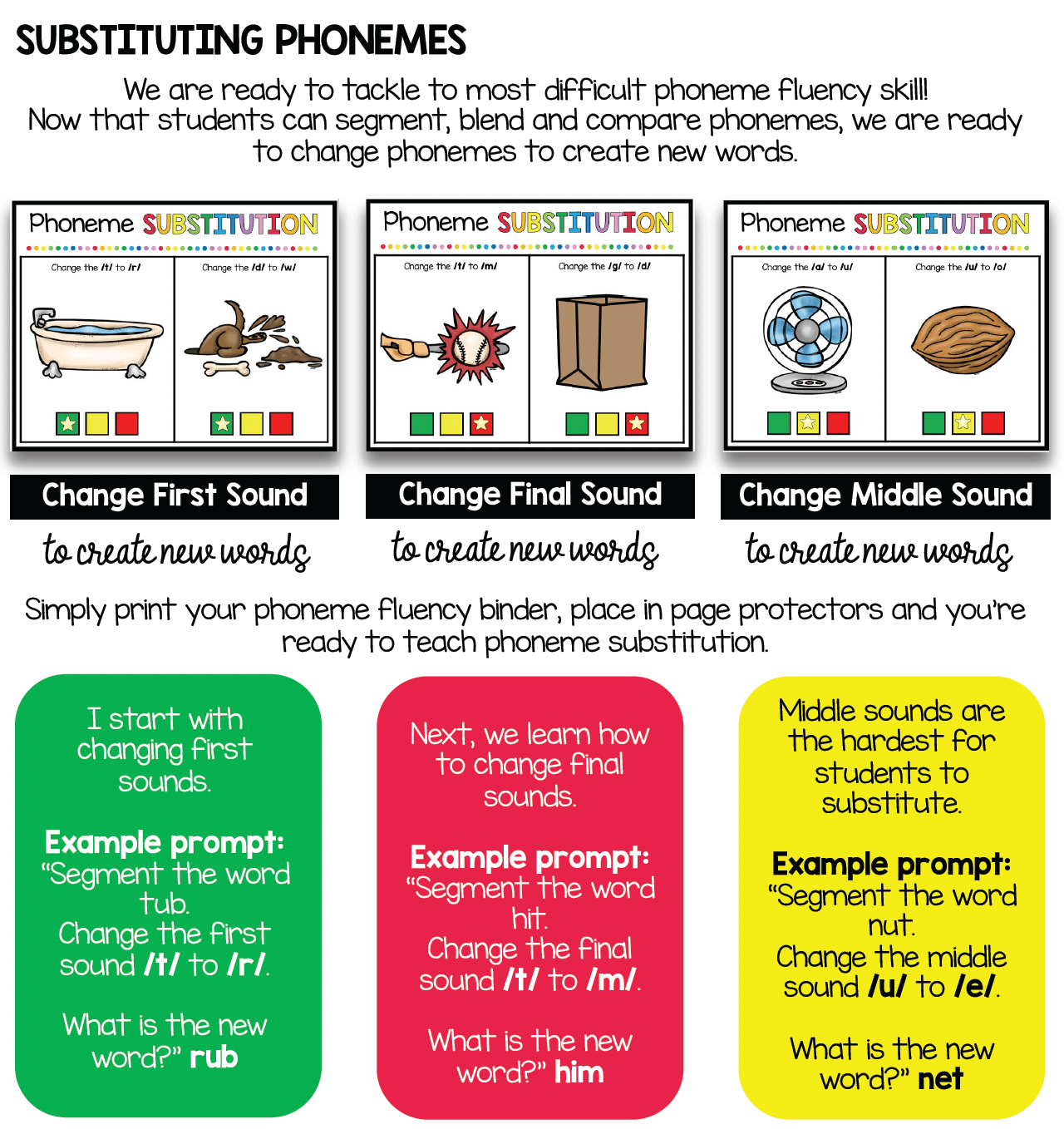Phonemic Awareness in Pre-K and Kindergarten FREEBIES
I have been diving deep into the science of reading and the research behind quality reading instruction.
Why are so many students having a difficult time learning how to read?
Chances are, they have not be taught direct, systematic phonemic awareness.
Phonemic awareness is the foundation for decoding and spelling skills.
How do we build confident, capable readers? The research is clear and has been for many years.
On this blog post, I am going to dive deep into the first step to building capable readers: phonemic awareness.
I will give you actionable strategies, resources and ideas for building a strong foundation for your students.
All of the research shows that giving students a strong phonemic awareness foundation leads to better readers.
The aspect that many people forget is that phonemic awareness is 100% auditory.
You do not need to teach letters connected to sounds yet.
Phonemic awareness is so important because this foundation prepares them for eventually applying letters to sounds to create words.
After going through this program, students will know how to identify phonemes, blend, segment and manipulate sounds to create words.
HOW TO TEACH PHONEMIC AWARENESS
There are seven critical steps to teaching phonemic awareness, and I have combined these steps into four complete units.
Read this blog post to learn more about each unit and the research behind teaching these skills.
The good news is that teaching phonemic awareness is FUN!
Children absolutely love manipulating words and sounds, and it can be done through songs, chants, nursery rhymes and games.
I suggest teaching the skills in the order I outline as the units build on each other.
CLICK HERE TO PRINT FREE SAMPLE LESSONS
Click the links below to jump to each step.
Or read the entire blog post to learn how I teach all 7 steps of phonemic awareness.
STEP 1 ALLITERATION
STEP 2 ISOLATING FIRST SOUNDS
STEP 3 RHYMING
STEP 4 ONSET AND RIME
STEP 5 BLENDING AND SEGMENTING
STEP 6 COMPARING PHONEMES
STEP 7 PHONEME SUBSTITUTION
Steps #1-4 are important, but you’ll really see the magic happen with steps #5-7.
Some kindergarten students, who already have a basic foundation, will be ready to start at step #5.
We need to teach children that the words we speak are made up of individual sounds.
Alliteration is the same sound spoken multiple times in a row. This is a form of figurative language that makes our speaking/writing fun and engaging.
An easy way to start is by using your student’s names.
They will instantly be engaged with what you’re saying if you use them in your lesson.
For example, “Jenny is good at jumping jacks! /j/ /j/ j/.”
“Bella is wearing a blue bow! /b/ /b/ /b/.”
This is the perfect way to begin teaching the first skill of being aware of and isolating sounds.
I am bring attention to the first sound in a word by repeating it with alliteration.
Remember: phonemic awareness is focusing on sounds we say, and we are not focusing on attaching letters to sounds yet.
Getting started with alliteration:
To kick off our complete unit on alliteration and isolating first sounds, I tell children we are going to play a game.
We are going to the grocery store! Read this sentence to students three times:
After reading the sentence, ask students what sound they keep hearing? /h/
Read the sentence again, and as you say each item she purchased, place the picture in a pocket chart or on display.
The tomato picture would be thrown away, because it doesn’t match the first sound /l/ of all the items in the shopping cart.
I do this activity six different times, focusing on the sounds: /h/, /c/, /p/, /s/, /l/ /b/
Remembering… we aren’t learning letters right now! We are building our phonemic awareness foundation, so when we do move into phonics, the stage has been set.
Now we more onto practicing alliteration sentences.
We will be working on alliteration, expanding our vocabulary, speaking in complete sentences and isolating first sounds with this next activity.
This takes a lot of modeling at first, but your results will be incredible by doing this just 5-10 minutes a day.
Simply display one picture strip in the pocket chart at a time.
For lessons 7-20, we warm up with these sentences, and even if students can only use two of the words in a sentence, that is okay!
You can also keep these alliteration strips in a binder in page protectors if that is easier (small groups made easy!)
I also have these pictures formatted on Google Slides. Display on your board and practice alliteration whole group!
Here is how I break down teaching sounds:
You can do more than one lesson each day, or read them up over the course of several days.
With this unit, your students will train their brain to listen for sounds within in words - specifically first sounds.
They will learn to identify first sounds and learn how to sort pictures/words based on their first sound.
This is one of the very first steps to building capable readers!
We spend quite a bit of time on rhyming. This is such an important skill: to be able to hear if two words sound the same.
Now I am getting students’ attention to listening to sounds. Can they hear when words sound the same?
I start by using this Google Slides activity for whole group lessons. I love the picture support and audio option for students.
After introducing what rhyming is, I move on to our unit. I keep all my backlines organized in a folder with page protectors.
I start with the pocket chart picture cards shown below.
We need a lot of practice together before working independently.
I have created an entire unit to teach rhyming complete with pre/post assessents, hands on centers, puzzles, pocket chart cards, worksheets, cut and paste activities and more!
For independent rhyming practice, we love Boom Cards.
Why? They are self checking, so students immediately get feedback if their answer is correct.
They also come with audio, so students are not guessing what the pictures are.
I get feedback and reports to see how each student does.
Two Boom Decks are included in the bundle above!
Now we are ready to start hearing two sounds and blending them together. The perfect way to do this is learning onset and rime.
I call this the robot game! I will talk like a robot, and children must blend my two sounds together to make a real word.
Note: this skills only takes a few minutes each day to teach, and it can be taught concurrently with rhyming.
I include this game in digital format, or print it to play in small groups.
Children absolutely love this! You can also do this orally by breaking an onset (first sound) from the rest of the word.
Examples: /st/ op stop - /c/ at cat - /t/ each teach
Spending three-five minutes a day warming up with this skill will be so helpful for your beginning readers!
The Google Slides game, Boom Cards and printable binder are all included in this complete phonemic awareness kit.
CLICK HERE TO PURCHASE THE COMPLETE UNIT
When teaching phonemic awareness, we start with the easiest skills, and progress into the more difficult tasks.
The next three skills I teach are:
I call these steps fluency with phonemes, and I have combined them into one complete unit.
I use THIS resource and create a phoneme fluency binder for small groups.
Everything is planned out for you! You’ll love how easy this program is to use.
This is a 12 minute video… grab a cup of coffee or tea and see how I teach this comprehensive kit.
These steps are where the magic truly starts to happen. All the skills we have covered so far lead up to this!
I suggest teaching phonemic awareness in small groups.
Some children will move quicker through each step, and I provide assessments so you can easily place students in a group at their instructional level.
Onset and rime is segmenting a word into two sounds, but once they have mastered this, we want to segment and blend words with three sounds.
When we start incorporating letters with phonics (later), these words with three sounds are called CVC words (consonant, vowel, consonant).
Words such as cat, run, hit, pop, bed, etc. The vowel will always be short.
Blending is easier than segmenting, so we start with this.
I provide the blending phonemes word list in THIS unit.
Simply place the blending mat in a page protector and you’re ready to begin blending three sounds into words.
I create one for each student in my small group, but you can also print one and pass it around.
Once students can blend three sounds together, we are going to learn how take a complete word, and segment it into three individual sounds.
This skill is generally more difficult for students than blending.
We have already laid the foundation of words being broken into sounds, using color sound boxes and moving left to right.
Our goal is to just segment, hear and identify the three sounds. We aren’t spelling words yet.
These segmenting mats make it so easy! Just print, place in page protectors and students can begin segmenting.
I include mats that focus on one vowel sound, and I also provide mats that have all short vowel sounds on one page.
Students make so much progress with this consistent formatting and segmenting practice!
Here is another idea of how to help students stretch the word out to hear the sounds in words.
Word ideas: ran, hip, bike, shut, yet, came, plop, hut, bake, chip, etc. These words all have three sounds, or phonemes.
Here is another example of stretching words to hear sounds:
These activities are building the foundation for students, so when they are ready, you can start applying letters to each sound.
Here is a quick video of how we compare phonemes:
For phonemic awareness, I use three color boxes shown above. I have students move their finger and actually point as they say each sound.
We practice segmenting each picture into sounds, and once they have mastered this, I can ask compare/contrast questions such as “Which two words have the same first sound?” In the beginning, I even point to the square I am asking about.
First sounds are the easiest for students to match, then the final sounds (in the word map, /p/ is the final sound), and the trickiest for students to compare/contrast are the middle sounds in words. We work on middle sounds after mastering first/last sounds.
Later, when we move on to phonics, I give students three squares to write each letter in for CVC words. This works beautifully!
The beauty of small groups is you can target the exact skill(s) students need. Some students will be ready to move on to to the next skill, while others need additional practice. How do you know if students have mastered each skill?
This song and activity are perfect for building phonemic awareness. We are manipulating and substituting and the kids are incredibly engaged because you’re connecting this new skill to their names!
Substituting sounds can be one of the most difficult phonemic awareness skills to teach, but using their names to connect new information to known information keeps their attention.
We spend quite a bit of time on substituting each sound. They key to success is the consistent formatting, using the colored squares and modeling for students first.
15 mats are included for first sound substitution, 15 for final founds and 15 for middle sounds.
Teaching these skills in small groups will help you know exactly where students are at.
Simply print the activity mats, place them in page protectors in your binder and teach!
All of the planning has been done for you!
I include mats for substituting first, middle and final sounds.
I have mentioned that phonemic awareness does not include teaching letters. Connecting letters to sounds in considered phonics, not phonemic awareness, but I have included these activities for students who are ready.
We covered a lot in this unit - blending/segmenting, comparing phones and substituting phonemes!
I use student data to drive my instruction and level my groups, so I use this to keep me organized:
PHONEMIC AWARENESS and PHONICS go hand in hand.
READY TO GIVE YOUR STUDENTS THE PHONEMIC AWARENESS FOUNDATION THEY NEED?
ADDITIONAL IDEAS
You are practicing rhyming, alliteration and simply playing with words.
Here is another fun song that practices manipulation and substitution. We sing the song and then substitute the vowel sound.
I then will ask children questions like what is the first sound you heard in Justin’s name? /J/J/Justin
Don’t even ask what letter name, just what sound.
With this one song, we are practicing so many skills. It is so fun! Do this every single day for the week, and I promise your kids will not be tired of it.
They absolutely love hearing everyone’s names, and can’t wait to see who you will sing next!
